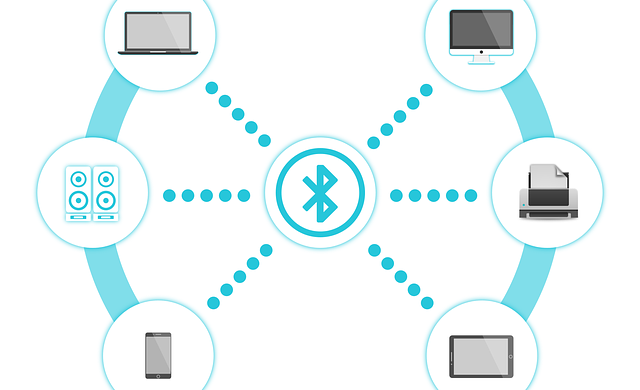
I bet you are part of the millions who rarely use Bluetooth for file sharing after the advent of Shareit and WhatsApp. The Bluetooth era where everyone would commune and send and receive music, pictures and various other files came and went sooner than you could say ‘Device is now discoverable’. Now, Bluetooth retreated and has come back with a bang with Bluetooth 5. Originally found on a Samsung S8, which was the first smartphone to have it in its system,“Bluetooth 5 delivers “connectionless” IoT, advancing beacon and location-based capabilities in home, enterprise and industrial applications,” according to the Bluetooth site.
“Bluetooth® 5 is a transformative update that significantly increases the range, speed and broadcast messaging capacity of Bluetooth applications. Released on 6 December 2016, Bluetooth 5 quadruples range and doubles speed of low energy connections while increasing the capacity of connectionless data broadcasts by eight times. It achieves all this alongside its industry-leading power performance,” it says.
It is anticipated that by the year 2020, more than 371 million Bluetooth enabled devices will be available to customers and manufacturers. It is purported that the new Bluetooth will be able to connect 4 times as fast and with 8x the broadcast messaging capacity. Also, Bluetooth 5 will further increase“the adoption and deployment of beacons and location-based services in the home automation, enterprise, and industrial markets.”
The site also goes on to state that, “in scenarios where contextual awareness like navigation and pin-point location are crucial – such as hassle-free airport navigation experiences, asset tracking of warehouse inventory, emergency response, even smart city infrastructure that helps the visually impaired be more mobile – Bluetooth 5 will send information without connection barriers.”
Supported devices can transfer data up to 2 Mbps, which is twice the speed as Bluetooth 4.2. This means that you’ll be able to send and receive data, whether that’s music files, documents or photos, in half the time. This transfer speed is also more than enough to support lossless CD-quality audio, provided that the same high-bit-rate codecs are present in both your smartphone and Bluetooth headphones.
Bluetooth 5.0 will have four times the range as Bluetooth 4.2. This means your smartphone and Bluetooth speaker will be able to work up to 260 feet away from each other (if no walls interfere). That’s a huge jump up from the 30 feet allowed by Bluetooth 4.2. The extended range of Bluetooth 5.0 could also have a big impact on smart home (IoT) devices as well, like smart thermostats, smart security cameras and smart bulbs. The low-energy and increased range could mean that these connected devices could switch over from wi-fi.
Perhaps the biggest improvement that Bluetooth 5.0 will make on your life is that it will enable two devices to be paired to another device at the same time. For instance, two people with different wireless headphones can pair to the same smartphone and listen to the same music; no more cumbersome earbud-sharing. This could also impact your decision to get a multi-room sound system, because you could be able to connect your smartphone to two different speakers in different rooms.
Bluetooth 5.0 isn’t perfect and won’t solve all your streaming problems. For example, it won’t allow you to play different songs in multiple roomsbecause it’s still a peer-to-peer connection (even though it allows for more “peers”). And you’ll only get the full advantages of Bluetooth 5.0 if the two (or three) devices connected support it. That said, Bluetooth 5.0 has the potential to be awesome; and because your next smartphone will support Bluetooth 5.0, if you’re planning on purchasing new home speakers, it might be worth waiting until a Bluetooth 5.0–supported model hits shelves.
Most of us don’t know the history of Bluetooth. For how innovative the technology, the name doesn’t sound techie. It’s not an acronym and doesn’t stand for anything. So, what does it mean?Surprisingly, the name dates back more than a millennium to King Harald “Bluetooth” Gormsson who was well known for two things:
His dead tooth, which was a dark blue/grey colour, and earned him the nickname Bluetooth.In 1996, three industry leaders, Intel, Ericsson, and Nokia, met to plan the standardization of this short-range radio technology to support connectivity and collaboration between different products and industries.
During this meeting, Jim Kardash from Intel suggested Bluetooth as a temporary code name. Kardash was later quoted as saying, “King Harald Bluetooth…was famous for uniting Scandinavia just as we intended to unite the PC and cellular industries with a short-range wireless link.”Bluetooth was only intended as a placeholder until marketing could come up with something really cool.
Later, when it came time to select a serious name, Bluetooth was to be replaced with either Radio Wire or PAN (Personal Area Networking). PAN was the front runner, but an exhaustive search discovered it already had tens of thousands of hits throughout the internet.
A full trademark search on Radio Wire couldn’t be completed in time for launch, making Bluetooth the only choice. The name caught on fast and before it could be changed, it spread throughout the industry, becoming synonymous with short-range wireless technology.
The Bluetooth logo is a bind rune merging the Younger Futhark runes (Hagall) (ᚼ) and (Bjarkan) (ᛒ), Harald’s initials.
Article by Nelson Madzima





